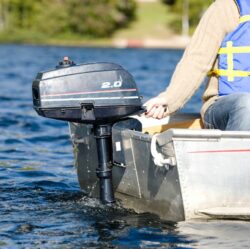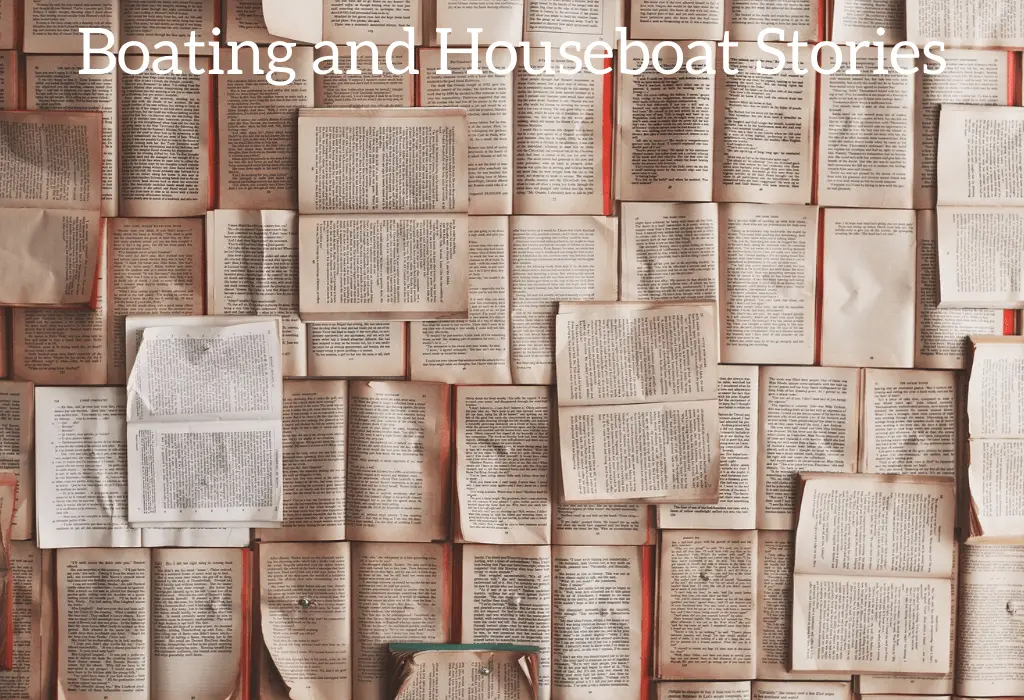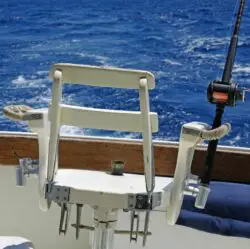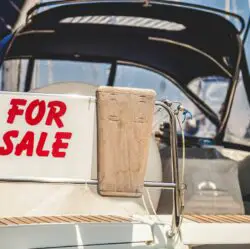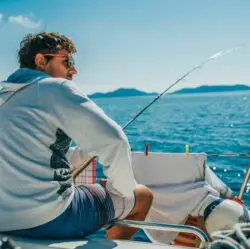Imagine yourself sailing into the sun-kissed horizon, the salty breeze tousling your hair, while your trusty Bass Tracker boat playfully hops over the shallow waves like a jovial rabbit. Now, if that doesn’t get your nautical blood pumping, I’m not sure what will.
*This post may contain affiliate links. As an Amazon Associate we earn from qualifying purchases.
Welcome to a world of exploration and adventure, where we delve into the heart of boating wisdom. We’re about to embark on a fantastic voyage, picking apart the mystery of navigating shallow waters in a Bass Tracker boat, a journey that will leave us a little wiser, a tad bit saltier, and perhaps, just perhaps, craving our next aquatic adventure.
If you’ve ever wondered, “How shallow can my boat go?”, you’re not alone. It’s a question that has left many a boater scratching their sea-capped heads.
I’m here to tell you, with a hearty sea shanty on my lips, that understanding your boat’s draft (the depth your boat needs to float), is like having a key to Davy Jones’ locker itself. So tighten your life jackets, folks, because we’re diving in head-first.
Understanding the Basics: Boat Draft and Its Importance
“What’s in a draft?” you might ask, echoing a certain bard, albeit with a salty twist. A boat’s draft, for those not in the know, is the distance from the waterline to the deepest part of your boat beneath the water.
It’s a bit like your footprint in the sand – the deeper it is, the more beach you’re going to need to walk comfortably without tripping up.
Let’s not pull up the anchor just yet. Understanding what affects your draft is as important as knowing the lyrics to your favorite sea shanty. So what factors are stirring the pot?
- Load: Simply put, the heavier the load, the deeper your boat sinks, and the more water it needs to float. Picture your boat like a floatie with an elephant onboard. More weight = more water needed.
- Water Conditions: Freshwater or seawater, calm or choppy – it’s not all the same blue stuff. Different water densities can affect your draft, like the difference between a walk on the beach and a trudge through quicksand.
- Boat Design: Ever seen a flat-bottomed boat skimming over the shallows while a deep-hulled vessel waits jealously in deeper waters? That’s boat design influencing draft.
“Why is draft so important?” I hear you echo over the waves. Well, my seafaring friends, your draft is what stands between you and the ground beneath the waves.
If you underestimate your draft, you might find yourself performing an unplanned reenactment of the Titanic, sans the iceberg. And if you’re anything like me, you’d rather avoid the “unsinkable” ship routine.
The Bass Tracker Boat: An Overview
Ah, the Bass Tracker Boat, a vessel close to my heart. I still remember when I first took my kids, Mia, Jonathan, and Clara, out on our Bass Tracker. Clara, bless her little adventurous soul, squealed with delight as we glided over the water, convinced we were on a magical sea creature.
The Bass Tracker Boat is a staple among boating enthusiasts, renowned for its versatility, robust design, and admirable performance in shallow waters.
Let’s drop anchor for a moment and chat about the history of these fine vessels. Bass Tracker Boats sailed into the boating world with a splash in the 70s.
Since then, they’ve been making waves, offering a variety of models tailored to a boater’s heart’s desire. With features that would make Neptune himself nod with approval, Bass Tracker Boats have proven their mettle, both in tranquil lakes and in the choppier seas.
Each Bass Tracker model is unique, like a snowflake on the ocean, and they each have their own draft. Some, like the classic Bass Tracker Pro 170, boast a minimal draft that allows them to slide over shallow waters with the grace of a swan.
Others, like the larger Bass Tracker Classic XL, require a tad more depth, but still maintain a respectably shallow draft.
“How can I find out my boat’s draft?” I can almost hear you yelling over the sound of the crashing waves. Well, worry not! The draft of your Bass Tracker Boat can usually be found in the owner’s manual.
If you don’t have your user’s manual than don’t freak out just yet. You can find the draft information for the latest Bass Tracker models in the table below:
| Model | Draft (in inches) |
|---|---|
| Bass Tracker Classic XL | 13 |
| Bass Tracker Pro 170 | 12 |
| Bass Tracker Pro Team 175 TF | 12 |
| Bass Tracker Pro Team 175 TXW | 12 |
| Bass Tracker Pro Team 190 TX | 13 |
| Bass Tracker Pro Team 195 TXW | 12 |
| Bass Tracker Pro Guide V-16 SC | 15 |
| Bass Tracker Pro Guide V-175 WT | 14 |
| Bass Tracker Targa V-18 WT | 18.75 |
| Bass Tracker Targa V-19 WT | 18.5 |
If that fails, or if you’ve used your manual as an impromptu coaster one too many times, the manufacturer’s website or a friendly chat with a Bass Tracker dealer should get you the answers you need.
Now, armed with your boat’s draft and a renewed sense of purpose, let’s take a look at how you can navigate those shallow waters that were once off-limits. Let’s unravel the question, “how shallow can a Bass Tracker Boat go?”.
The answer may surprise you, or at least make you yearn for your next shallow-water adventure.
There’s a saying among old sea dogs, “A good skipper knows his draft like he knows his knots.” And it’s true. Knowing how shallow your Bass Tracker Boat can go can open up new waterways to explore and offer a safety net when navigating unfamiliar territory.
“So how shallow can a Bass Tracker Boat go?” Well, the answer lies in the boat’s draft, which as we know, is influenced by several factors. But let’s look at some general guidelines for our beloved Bass Tracker.
The Bass Tracker Boat, with its specially designed hull and lightweight body, is the maritime equivalent of a ballet dancer, able to tiptoe delicately across the shallowest of waters. Generally, you could expect to glide safely over waters that are just a few feet deep, given ideal conditions.
However, I have to emphasize that this is a rough guide and the actual minimum depth can vary depending on the factors we mentioned earlier. So while this number may help you, remember, it’s always better to know your exact draft.
You might be thinking, “But what about when the boat is loaded?” Excellent point, my observant reader. The weight on your boat can affect your draft and therefore the minimum depth required.
Consider this when planning your boating adventures. A trip with just you and your faithful golden retriever, Captain Paws, will require less water than a family outing complete with a picnic, fishing gear, and an adventurous kid (or three in my case).
Another important aspect to consider is the motor configuration. A trolling motor, for instance, could potentially navigate shallower waters than a larger, outboard motor.
And remember, when I talk about draft, I’m including everything under the waterline, including your motor.
Now, before you start venturing into the shallows, I would be remiss not to remind you of the importance of safety. Operating a boat in shallow water requires vigilance and a good understanding of your boat’s capabilities.
But fear not, dear reader, as your faithful guide, I’ll walk you through some top tips for safe and enjoyable shallow water boating in the following sections.
Operating a Bass Tracker Boat in shallow water can feel like performing a tightrope walk while juggling flaming swords – it requires focus, balance, and a bit of daring. However, with the right techniques, you can turn this precarious stunt into a graceful ballet.
Let’s dive into some strategies that’ll have you sailing through shallow waters like a pro:
Trim your Motor
Knowing how to trim your motor is like knowing the secret handshake at a pirate gathering; it gives you an edge. By adjusting the angle of your motor, you can reduce your draft and avoid grounding. Here’s how:
- When in shallow waters, trim your motor up slightly to lift the propeller closer to the surface.
- Do keep an eye on your speed, though. When the motor is trimmed up, your boat might take on the qualities of a galloping seahorse, hopping more over the waves.
Reduce your Speed
While speed might give you a thrill worthy of a swashbuckling sea tale, in shallow waters, it’s safer to imitate the gentle pace of a sea turtle:
- Lower speeds allow you more reaction time to avoid obstacles.
- It also reduces the impact if you do happen to hit something under the water.
Know your Route
Sailing without knowing your route is like going on a treasure hunt without a map. Sure, it might be an adventure, but you’re also likely to end up beached on a sandbar:
- Study charts of the water body before you venture out. They are like your guiding stars, showing you where it’s safe to sail.
- Keep an eye out for markers that indicate shallow waters. You wouldn’t want to find out the hard way!
Use a Spotter
Two sets of eyes are better than one, especially when navigating tricky waters. If you’ve got a first mate on board, have them keep a lookout for changes in water color or breaking waves that might indicate shallower waters.
Equipment for Shallow Water Boating with Bass Tracker Boats
Now, all the skill in the world can’t substitute for good equipment. Luckily, Bass Tracker Boats are compatible with a variety of gadgets designed to help you navigate the shallows.
Here are a few that might just make your boating adventures smoother:
- Depth Finders: These handy devices can give you a real-time reading of the water depth. It’s like having a friendly dolphin reporting back from under the waves. Depth finders are invaluable when sailing in unfamiliar waters, so if your Bass Tracker doesn’t already have one installed, it might be time to consider it.
- Pole Anchors: Ever wished you could pause your boat at the push of a button? With a pole anchor, you can. They are great for holding your boat in place in shallow waters without the hassle of a traditional anchor.
- Trim Tabs: Trim tabs can help adjust your boat’s attitude (not the cheeky kind, the physical kind). They can be particularly useful for balancing uneven loads, keeping your boat level and reducing your draft.
Remember, though, these are tools, not substitutes for good boating practices. No amount of gadgets can replace knowing your boat, understanding your environment, and sailing responsibly.
Navigating shallow waters is as much about reading the water as it is about handling your boat. Tides and weather can play a big part in determining the depth of the water.
Here’s a quick guide to understanding how these factors can affect your boating experience:
- Tides: The ebb and flow of the tide can dramatically change water depth, especially in coastal areas. Make sure you check tide tables before you set out. Remember, the sea is a fickle mistress and can go from a bathtub depth to over your head faster than you can say ‘avast ye’.
- Weather: Weather can stir up the water, causing sandbars to shift and water levels to change. A sunny day might find you sailing smooth, but add a storm into the mix, and you could be looking at a whole different waterway. Be sure to check the weather forecast before you set sail, and be prepared to adjust your plans if needed.
While we’re on the topic of weather, let me share a quick story. It was a blustery day, and I was out on the lake with Mia, Jonathan, and Clara.
Now, Mia, bless her heart, had been checking the weather app on my phone and announced that a storm was coming. Just as I was assuring her that we were safe, a gust of wind swept my hat off into the water.
Jonathan managed to fish it out with a net, but not before Mia declared that she was our weather forecaster from then on.
Troubleshooting Issues in Shallow Water with Bass Tracker Boats
Even with the best planning, things can sometimes go awry. But, fear not! With a bit of know-how, most issues can be resolved quicker than a seagull swoops in on your unattended sandwich.
Here are a few common problems and their solutions:
Grounding
If you find yourself stuck on a sandbar or shoal, don’t panic. First, check that everyone is okay. Then, try to determine the extent and location of the grounding.
If you’re lucky, you might be able to push off with a paddle or pole. If that doesn’t work, you may need to lighten the boat by shifting or offloading weight, or wait for a tide to lift you off.
Damage to the Hull or Motor
Accidentally grounding or hitting an underwater object can cause damage to your boat. In such cases, your best bet is to:
- Assess the damage: Is it superficial, or more severe? A minor scrape might not ruin your day, but a hole in the hull is another story.
- If there is a hole, try to stop the water from coming in. If you don’t have a proper patch kit, a bit of plastic and some waterproof tape can work as a temporary solution.
- Get to shore as soon as it’s safe to do so, and seek professional repairs.
Staying Safe in Shallow Water with Bass Tracker Boats
Safety should always be your first concern when boating, especially in shallow waters. To paraphrase a sea shanty, the sea may be a good friend, but she can be a terrible enemy.
Here are some guidelines to ensure your boating experience is more friendly than fearsome:
Wear Life Jackets
I can’t stress this enough: wear your life jacket! It doesn’t matter if you’re an Olympic swimmer or if the water is shallow.
Accidents happen, and a life jacket can mean the difference between a scary story and a tragic one. My children, Mia, Jonathan, and Clara, know this rule by heart.
Even their stuffed animals have their miniature life jackets!
Don’t Overload Your Boat
Every boat has a maximum weight capacity, and exceeding it can be as risky as playing hide-and-seek with a kraken:
- Overloading your boat can make it unstable and increase your chances of capsizing or grounding.
- Always keep an eye on your boat’s weight, especially when adding equipment or extra passengers.
Watch for Other Boaters
While sailing in shallow waters, you should always be aware of other boaters around you. They might not be as considerate or knowledgeable as you are:
- Maintain a safe distance from other boats.
- Use proper signals to communicate your intentions.
- Stay alert and be ready to adjust your course if needed.
Conclusion
A Bass Tracker boat, given its innovative design and specifications, can navigate shallow waters with relative ease. The specific depth at which a Bass Tracker boat can function depends on the boat’s model and its equipment.
Many Bass Tracker boats can operate without risking damage to the hull or motor in a minimum water depth of approximately 1-1.5 feet, making them fantastic choices for shallow water fishing and tight spot maneuvering.
Here’s a more detailed comparison of the drafts for the entire Bass Tracker model range to help you better understand which option is ideal for different boating enthusiasts:
| Model | Draft (in inches) | Ideal For |
|---|---|---|
| Bass Tracker Classic XL | 13 | Perfect for those who enjoy the feel of a classic design and frequently navigate extremely shallow waters such as small creeks. |
| Bass Tracker Pro 170 | 12 | Excellent for individuals who need a compact but high-performing boat for shallow water bodies. |
| Bass Tracker Pro Team 175 TF | 12 | Ideal for freshwater fishermen who want a versatile boat capable of navigating shallow waters. |
| Bass Tracker Pro Team 175 TXW | 12 | A superb choice for those who want a good balance of performance in shallow and slightly deeper waters. |
| Bass Tracker Pro Team 190 TX | 13 | Great for avid anglers who need extra space for storage and movement and still want to traverse shallow waters. |
| Bass Tracker Pro Team 195 TXW | 12 | Perfect for those who prefer a spacious boat that maintains excellent performance in shallow water. |
| Bass Tracker Pro Guide V-16 SC | 15 | Suitable for consumers who venture into a mix of shallow and medium-depth waters, providing a deeper draft for improved stability. |
| Bass Tracker Pro Guide V-175 WT | 14 | Ideal for boating enthusiasts who want a deeper draft for varied conditions, while still maintaining good performance in shallow water. |
| Bass Tracker Targa V-18 WT | 18.75 | Perfect for those who prefer a larger boat that can manage both shallow and deeper waters with ease. |
| Bass Tracker Targa V-19 WT | 18.5 | A fantastic choice for those who need a larger boat for varied water conditions, from shallow creeks to deeper lakes and rivers. |
The model you choose should not only depend on the depth of the waters you plan to navigate but also on your specific needs including the size of the boat, storage capacity, comfort, and the type of boating activity you prefer.

